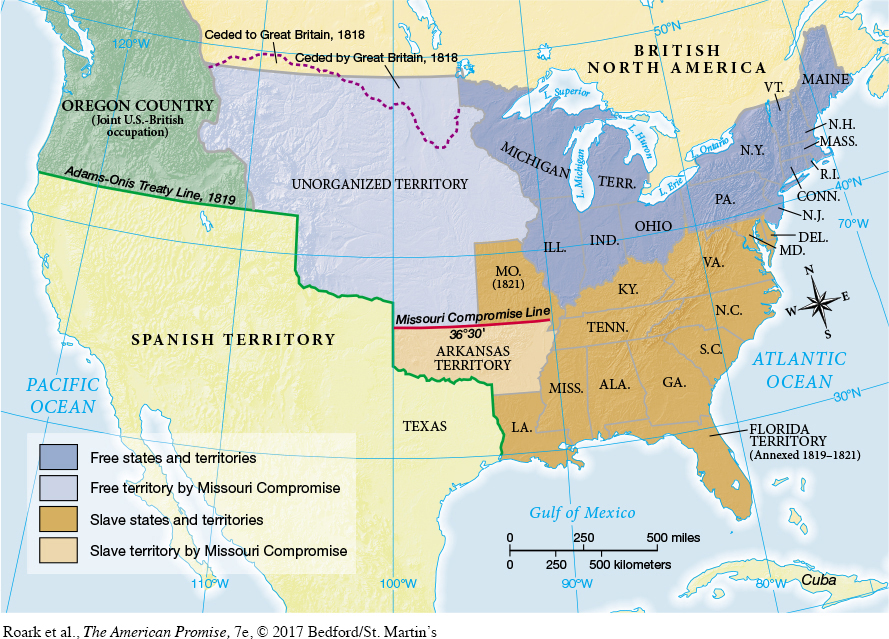The American Promise: Printed Page 276
The American Promise, Value Edition: Printed Page 253
The American Promise: A Concise History: Printed Page 288
The Missouri Compromise
The American Promise: Printed Page 276
The American Promise, Value Edition: Printed Page 253
The American Promise: A Concise History: Printed Page 288
Page 276The politics of race produced the most divisive issue during Monroe’s term. In February 1819, Missouri—
That anomaly—
The American Promise: Printed Page 276
The American Promise, Value Edition: Printed Page 253
The American Promise: A Concise History: Printed Page 288
Page 277Tallmadge’s amendments passed in the House by a close and sharply sectional vote of North against South. The ferocious debate led a Georgia representative to observe that the question had started “a fire which all the waters of the ocean could not extinguish. It can be extinguished only in blood.” The Senate, with an even number of slave and free states, voted down the amendments, and Missouri statehood was postponed until the next congressional term.
In 1820, a compromise emerged. Maine, once part of Massachusetts, applied for statehood as a free state, balancing against Missouri as a slave state. The Senate further agreed that the southern boundary of Missouri—

The American Promise: Printed Page 276
The American Promise, Value Edition: Printed Page 253
The American Promise: A Concise History: Printed Page 288
Page 278President Monroe and former president Jefferson at first worried that the Missouri crisis would reinvigorate the Federalist Party as the party of the North. But even ex-